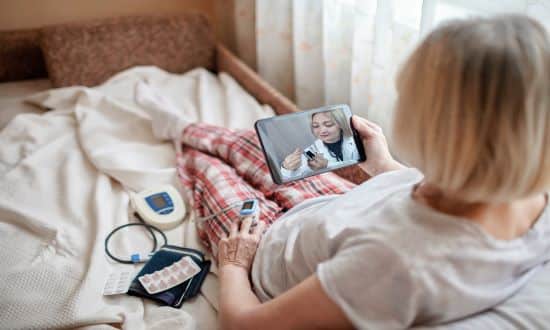We need to work together and put patients’ needs first
- 8 November 2022

The government’s plan for digital health and social care calls for technology to ensure people get the right treatment at the right time as part of the wider drive to more integrated, person-centred care. But while digitised patient communication is already helping, Greg Martin, Medical Doctor, consultant in public health medicine and founding director of Wellola, calls for greater emphasis to be placed on collaboration and evaluation.
As health and care resources are becoming stretched to the limit, it is vital that the sickest of the sick are treated in the right place at the right time. This is a fundamental goal of the UK government’s plan for integrated care, and technology is playing its part. Namely, digital patient communication, which is helping to keep people out of hospitals by simplifying care processes and encouraging self-care.
Virtual wards and hospital at home services, for example, are helping to reduce the number of unnecessary hospital visits by providing clinicians and patients with information that helps ensure they receive the right care in the right place. Further to this, digitising the patient-initiated follow-up (PIFU) process has cut the number of unnecessary routine appointments by asking patients to let doctors know when their symptoms get worse.
Even when patients do need to visit a hospital, communications technology is being used for letters, appointments and consultations to give patients greater control over their care, while releasing time for clinical staff. With more than 15 million people now living with long term conditions in the UK, and with life expectancy on the rise, efficiency gains will be critical for the health system as it struggles to deal with increased demand.
But despite already realising many of benefits digital patient communication can bring, there is so much more we can do to achieve more efficient, person-centred care: to optimise our use of communicating digitally with patients, we need to make lasting improvements in how we collaborate, and what we evaluate.
Working together will better meet patients’ needs
Collaboration between various stakeholders will expand on the efficiencies above and provide a more coordinated patient journey. For those of us involved with digital health, partnerships between citizens, services, systems, and suppliers will deliver these results.
Partnering with the citizen. Technology is just a stepping stone to resolving a patient’s needs. There is no one-size-fits-all approach. We in the digital health and care community must give patients the ability to use multiple ways to access the care they require. Flexible, modular options can be used across each stage of the patient journey. These options should focus on accessibility in user design as a key priority.
We also have to be inclusive; 6% of households have no access to the internet, for example. Technology can help release capacity for traditional access routes by directing people to digital channels. Meanwhile we can also continue to support people to use digital tools, empowering them to use technology to take meaningful control of their own health and care.
Partnering between services and within systems. Currently, a patient being monitored at home for one condition may have to come to hospital for another. To address this, services will have to coordinate care and communication around the needs of each individual, or risk confusing the patient. Working together is vital.
Health and care systems will need to make sure that patients have access to the most appropriate technology to help them manage their health and care. Existing software will need to seamlessly integrate with other systems to help join up the patient experience. This will require coordinated action between service providers and technology suppliers.
Partnering between suppliers. Ensuring patients get access to the right care at the right time can be better achieved by giving clinicians and hospitals the best tools for the job.
Patient communication tools can enhance electronic record systems, for example, by capturing and sharing patient information for use in multiple other systems. This can then release time for hospital staff, support more multidisciplinary working and help ensure people get to see the right healthcare professional.
Suppliers operate in a commercial world, of course, but the market is large enough for us to work together. Interoperability and standards provide the right framework for collaboration. If we do this well, we can offer potential purchasers fully integrated systems that are easier to implement, easier to use and make a real difference to patient care.
Improving evaluation will show the impact of patient-centred care
Achieving a more person-centred, collaborative approach will depend on what we set as our goals. Current performance measures cover the impact of individual technology.
We have to go beyond reduction of paper, post and no-shows and link digital patient communication to show how it delivers more efficient care processes, reduces staff burnout and enhances clinical care. Linking such measures will be hugely powerful. They will enable us to look at how digital patient communications can make a difference to how a hospital is managed, how patients are monitored, and how staff feel about their job.
With this way forward, we can show how digital transformation can build care around the needs and preferences of the individual. Let’s work together to make this happen.




